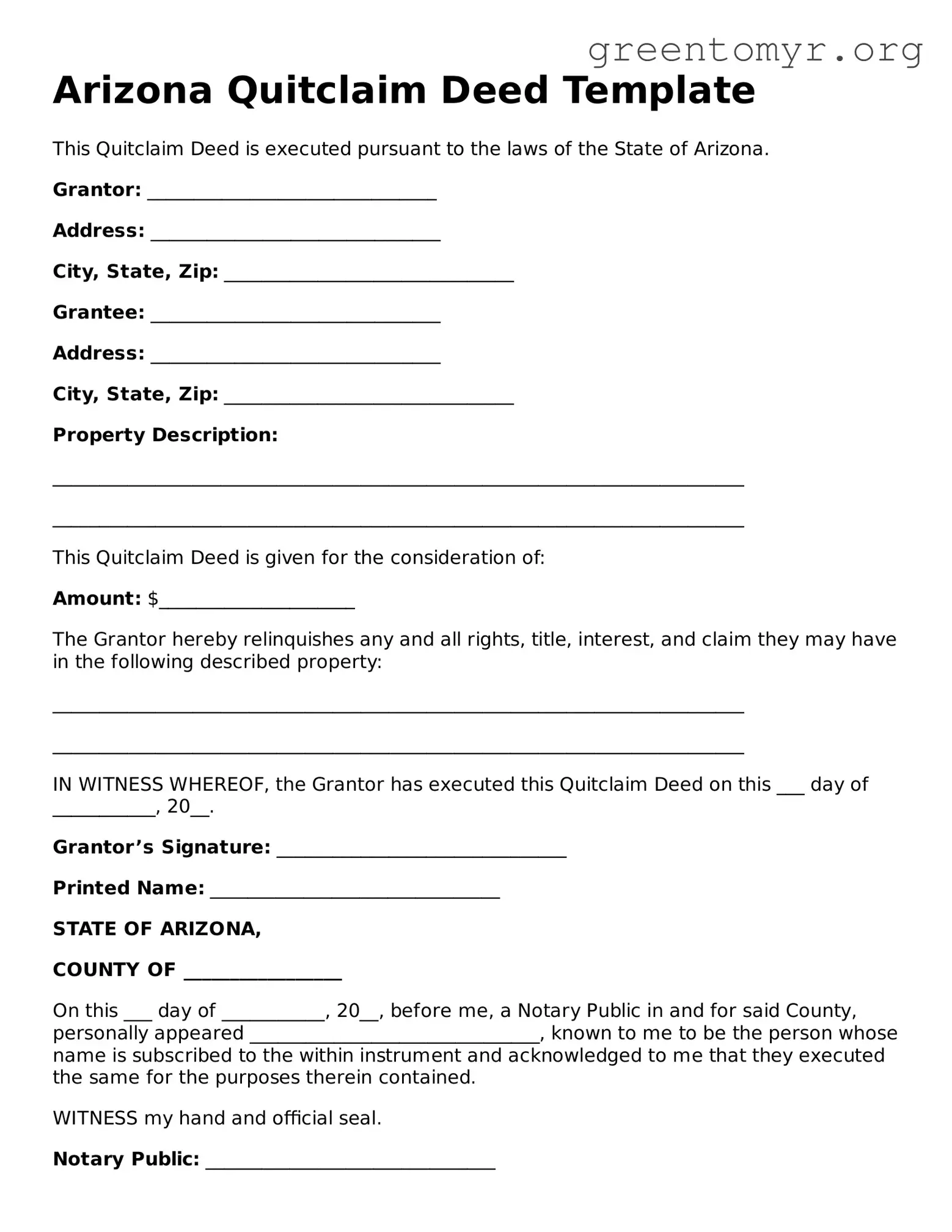Arizona Quitclaim Deed Template
This Quitclaim Deed is executed pursuant to the laws of the State of Arizona.
Grantor: _______________________________
Address: _______________________________
City, State, Zip: _______________________________
Grantee: _______________________________
Address: _______________________________
City, State, Zip: _______________________________
Property Description:
__________________________________________________________________________
__________________________________________________________________________
This Quitclaim Deed is given for the consideration of:
Amount: $_____________________
The Grantor hereby relinquishes any and all rights, title, interest, and claim they may have in the following described property:
__________________________________________________________________________
__________________________________________________________________________
IN WITNESS WHEREOF, the Grantor has executed this Quitclaim Deed on this ___ day of ___________, 20__.
Grantor’s Signature: _______________________________
Printed Name: _______________________________
STATE OF ARIZONA,
COUNTY OF _________________
On this ___ day of ___________, 20__, before me, a Notary Public in and for said County, personally appeared _______________________________, known to me to be the person whose name is subscribed to the within instrument and acknowledged to me that they executed the same for the purposes therein contained.
WITNESS my hand and official seal.
Notary Public: _______________________________
My Commission Expires: _______________________________
